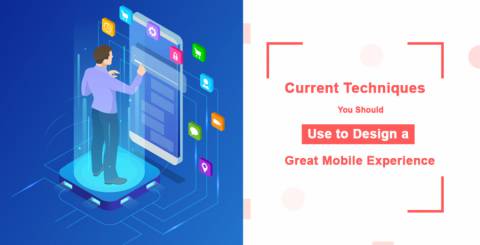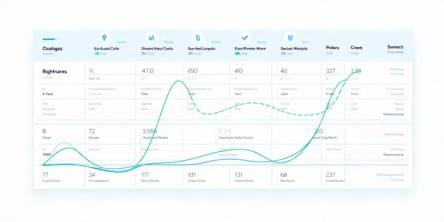Current Techniques You Should Use to Design a Great Mobile Experience

The user experience refers to the overall experience of a person in using the product or service. In the case of digital environments, user experience very well determines the quality of service. The first thing that a user looks into when he enters into a mobile or a web page is to evaluate the ease of experience. Hire a developer who is well-versed in developing applications that promise optimal user experience. One such example for user experience is the navigation, i.e., the ease of browsing through various sections, flow of content, placement of the icons, and so on.
If the user is not satisfied, there is a higher chance that he may not visit the mobile app/web page. Nowadays, all business revolves around mobile applications. There is a noticeable shift in the transactions from offline to online in the past decade. The paradigm shift can be attributed to the availability of smartphones at affordable prices and cheaper data plans. So, unless you own an app for your business, you are sure to lag in competition.
Besides, people do not trust third-party apps that are not in the stores. Hence, it is evident that your app must make entry into Google Play or App store to stand a chance of any success. There is a very thin barrier between the success and failure of an app and it very well depends on choosing the best mobile app development company. Some of the best practices to design a great user mobile experience are:
Review Google and Apple Design Guides
The success and failure of mobile application very well depend on the user experience.
There are a bountiful of mobile applications available on the Google Play and App store, and the user looks for other similar options available. The two major operating systems used in mobile devices are Android and iOS. Each of the operating systems has its specifications which are available to the app developers. If you wanted to design a responsive website, then it is enough if you consider the commonly used screen sizes.
But if you wanted to build a mobile application ideal for entry into Google Play or App stores, then you must be diligent enough to abide by the guidelines prescribed for each operating system. The guides are available on the official pages of Google and Apple.
So, the developers must ensure they follow all the specifications so that the app stands a chance for entry into these stores. So, while designing a mobile app, an app design company, should take proper care to ensure optimal user experience.
Customizing the interface
The main objective of the customizing the interface is to facilitate similar user experience and quality for both operating systems.
You may be working on two operating systems, but you can create a common interface for both. By customizing the design for each operating system, you ensure that you follow each of the specifications. If you have a general idea about the layout of the application and the composure of different screens, it is quite easy to work on customization. In this manner, the layout remains the same for both the operating systems, but there can be small changes in the design such as the appearance of buttons.
The interface should be adaptable to screens of different resolutions
After laying due significance to mobile operating systems with varying technical specifications, an app development company needs to lend importance to other features like screen size. Since Android is the predominant operating system, there are a number of models that rely on this operating system. All these models come in varying screen models and resolutions and hence the elements of the interface must be flexible and should be adaptable across different screens.
Pick the right font that reflects your brand
Similar to the design on the webpage, the app developers must pick the fonts that are readable and relevant to the application. Fonts like Roboto and Helvetica Nueu are the usual sources used in Android and iOS operating systems. As both sources are neutral, they are ideal for designing the interface, but may not be suitable for your application. It is ideal to determine the font styles for titles, menu, sub-titles right from the beginning. It is also important to take the personality of the brand into account.
From the above discussion, it is evident that the user experience has been critical for the success of the mobile application. So make sure to implement the above techniques as part of the design process in case of creating mobile apps.
Similar Articles
Food delivery applications, including Uber Eats, DoorDash, Zomato, Swiggy, and Grubhub, generate large volumes of valuable data.
Modern businesses are drowning in communication overload, and much of that burden stems from outdated tools that simply can’t keep up
Building lending software isn’t just a technical project—it’s a business decision. Whether you're a fintech founder or part of a traditional lending institution trying to go digital, three questions will shape everything that follows
Learn why robust security is crucial for super app development. Explore key strategies and best practices for mobile app development security.
Walkie-talkies with an extensive reception capacity have changed significantly when it comes to portable communication by displaying cutting-edge features with seamless connectivity that covers more than just the state
USB-C technology has revolutionized the way we charge our devices, offering faster charging speeds, higher power delivery, and universal compatibility across multiple devices
Discover expert mobile app development strategies to create a viral app that attracts users and boosts engagement
Optimize app localization for iOS users across the EU with language, cultural, and regulatory adaptations. Engage users and boost retention with these tips!
Discover the top 10 mobile app development trends of 2024! Explore 5G, AI, AR/VR, blockchain, and more to stay ahead in the ever-evolving app development landscape.









